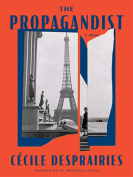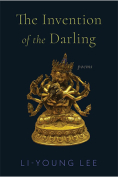The Road to the Country by Chigozie Obioma
 New York. Hogarth. 2024. 384 pages.
New York. Hogarth. 2024. 384 pages.
Chigozie Obioma’s third novel, The Road to the Country, is a tense, evocative novel of the Biafran War (1967–70). Situated in the tradition of works like Ken Saro-Wiwa’s Sozaboy (1994) and Chimamanda Ngozi Adichie’s Half of a Yellow Sun (2007), Obioma’s book follows a young man, Kunle, as he is swept up in a war that is arguably not his own. The novel coheres around a tragic childhood accident, when Kunle’s brother, Tunde, is hit by a car and paralyzed. Kunle’s feelings of guilt surrounding the incident motivate him to leave home as the war begins, to find his wheelchair-bound brother and bring him back home. However, it is not long until Kunle is forced to serve as a member of the Biafran Army, where he meets the soldiers that he will fight alongside, and a woman fighter, Agnes, whom he will fall in love with. It is the circuitous, violent trajectory of the war that structures the novel, as Kunle achieves victories and faces setbacks fighting with an undersupplied, exhausted Biafran army.
Importantly, The Road to the Country is framed by the observations of the Seer, a man from Kunle’s village who witnesses the war through Kunle’s eyes before he is even born. The Seer positions Kunle as an “abami eda: one who will die and return to life,” and these brief interludes, where the Seer watches Kunle through a divination bowl, create a feeling of inevitability and predestination around the war and Kunle’s role in it. The most evocative passages of the work, somewhat reminiscent of Ben Okri’s prose in novels like The Famished Road (1993), chronicle Kunle’s journey through the land of the dead after being hit by shrapnel.
Obioma positions this journey as a spectacle of testimony, as Kunle bears witness to the stories of dead soldiers and civilians before their final peace in the afterlife. The Road to the Country is, at its core, a triumph of witnessing as Obioma chronicles the love, violence, joy, and tragedy of one of the deadliest wars ever waged on the African continent.
Christopher Hebert
Ghent University































